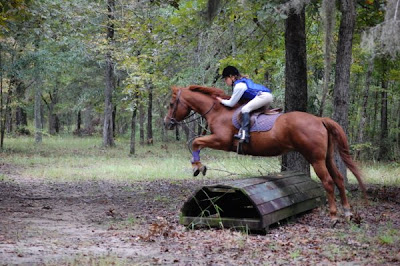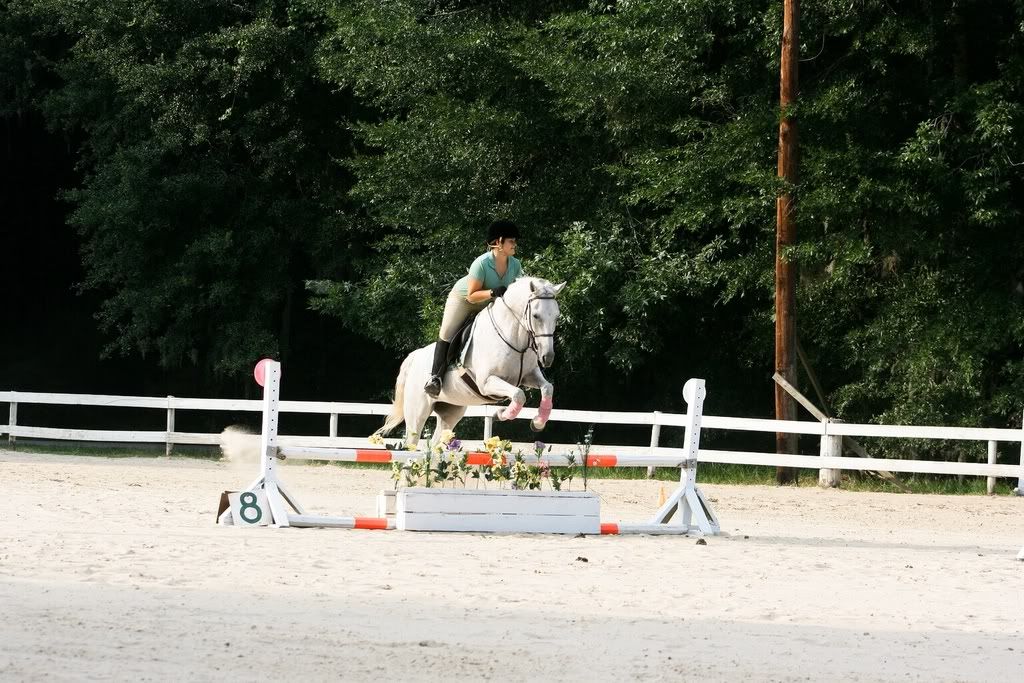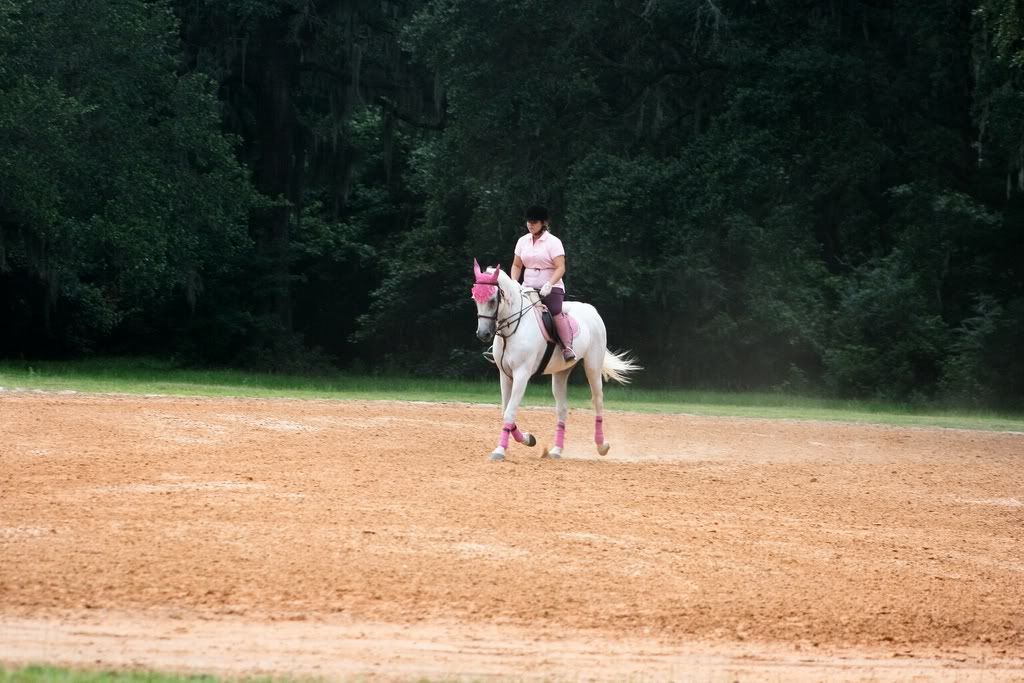Here is a great article that was published by dressageonline.com
It was written by Togey's owner. Her bio is included at the bottom.
"How Exercise Affects Nutrient Requirements of the Horse "
Preparing a horse for competition takes much time, dedication, and attention to detail. We spend hours in the saddle in preparation for the show. We put forth the extra effort to groom, bathe, and braid so that our horses will look their best when we enter at “A”. But how much time do we spend evaluating our horses’ nutrient requirements? Do we pay as much attention to our feeding program as we do our warm-up routine? The decisions we make regarding a horse’s nutrition program can significantly affect performance, but many riders spend little time dwelling on this aspect of performance preparation. Dressage is a sport that requires the horse to execute precise maneuvers while maintaining relaxation, rhythm, and suppleness in all gaits, and an inadequate nutrition program can limit the horse’s ability to offer the desired response to a rider’s aids. When feeding a dressage horse, our goal should be to provide adequate fuel for energy expenditure, replenish nutrients required for muscle repair and homeostasis, and support optimal health through an overall balanced diet. In this installment of a multi-part series on performance horse nutrition, we will discuss specific nutrient requirements which are affected by exercise and how these nutrients affect a horse’s ability to perform.
Energy
Providing energy for work is one of the primary considerations when feeding a dressage horse in training. An average sized horse (1100 lbs.) working 3 – 5 hours per week will require an extra 6.6 Mcal for exercise above the daily maintenance energy requirement, or a total of 23.3 Mcal per day. However, the energy requirement of the dressage horse can be quite variable and is dependant on several factors, including the individual horse’s metabolism, temperament, the intensity and duration of the work, ambient temperature and humidity, and other management factors. For example, warmblood breeds tend to be more “metabolically efficient” and may require fewer calories to maintain bodyweight than a similar size Thoroughbred or other breed that tends to be more “metabolically inefficient”. The ability of the horse to maintain adequate body condition is a good indication of whether or not sufficient dietary energy is being provided. The ideal body condition of a dressage horse is a 5 – 6 on the Henneke body condition scale. If energy intake falls below energy expenditure (i.e. a “negative energy balance”), weight loss will occur. Sometimes this would be a desirable scenario, such as in the case of an overweight horse. However, for the hard-working horse, a negative energy balance should be avoided, as putting weight back on an exercising horse can prove to be challenging.
The primary means by which energy is supplied to the horse’s diet is through carbohydrates present in forages and grains. Dietary carbohydrates can be classified into two general categories: non-structural and structural carbohydrates. Non-structural carbohydrates (NSC) include sugars and starches that are digested in the small intestine, while structural carbohydrates include fibers that are digested in the hindgut (cecum and large colon). The end product of NSC digestion (blood glucose) serves as a readily available source of muscle fuel or can be stored as fat or glycogen. The end products of fiber digestion (volatile fatty acids) are used primarily for maintenance energy requirements. They can also be utilized as fuel for exercise, but the process of converting fiber to muscle fuel is less efficient, takes much longer, and results in less overall energy production and storage. The major energy source for all cells in the body comes from the molecule ATP (adenosine triphosphate), and the primary substrates utilized for ATP production are blood glucose and glycogen (which is first broken down into individual glucose molecules). Therefore it is essential that the exercising horse receive adequate levels of NSC in the diet in order to supply the blood glucose and glycogen necessary for ATP production, which in turn is necessary for muscle contraction and other processes in the body which require energy.
Much attention has recently been placed on “low starch” diets for horses, leaving some horse owners with the impression that dietary sugar and starch is harmful to horses and that they should eliminate as much NSC from the diet as possible. This misconception can result in some real problems for the exercising horse, as the most efficient way to replenish muscle glycogen is through dietary NSC. If a horse begins an exercise bout with inadequate muscle glycogen stores, the onset of fatigue will occur much more quickly and overall performance will suffer. In the case of a horse that has been diagnosed with medical condition that interferes with normal glucose/insulin metabolism (i.e. insulin resistance, PSSM), fat and fiber should be relied upon as the primary sources of energy in the diet and NSC should be minimized. Specific feeding strategies for these types of horses will be discussed in the next installment of this series.
Research has identified the capacity of the small intestine to digest and absorb NSC prior to reaching the hindgut, and meals containing 2 – 4 g starch /kg bodyweight will minimize the risk of digestive upset due to excess carbohydrate reaching the cecum. A safe meal size depends on the starch content of the feed contained in that meal, and this would translate (at the conservative estimate of 2 g starch/kg bodyweight) to a 5 lb. meal of oats (45% starch), a 7 lb. meal of a typical sweet feed (30% starch) or a 22 lb. meal of a high fat/fiber feed (10% starch) for an 1100 lb. horse. Of course, feeding 22 lbs. of feed in one meal is not recommended due to the relatively small size of a horse’s stomach. A good rule of thumb for feeding grain concentrates is that no more than 0.5% of the horse’s bodyweight be fed in one meal (5.5 lbs for an 1100 lb. horse).
Fat, the other primary dietary energy source, contains 2.25 times more energy than an equal quantity of carbohydrate and is the most abundant source of stored energy in the horse’s body. Feeding fat increases the energy density of the diet, allowing for more calories per pound of feed to be delivered to horses needing to gain weight. Fat also provides essential fatty acids that are important components of all cell membranes and are vital for skin, coat, and hoof health in addition to certain aspects of immune function. Different sources of fat contain different fatty acid profiles, and good quality sources of fat include vegetable and marine oils, flaxseed, and rice bran.
Provided at 5 – 10% of the total diet, dietary fat will affect exercise metabolism by increasing the utilization of fat as fuel for low-to-moderate intensity exercise. This increased fat utilization may have a “glycogen-sparing” effect, leaving more muscle glycogen available to be drawn upon during times of more intense energy expenditure (i.e. for an extended trot across the diagonal). Dietary fat also facilitates the absorption of the fat soluble vitamins A, D, E, and K. There is a limit, however, to the amount of fat that can be digested and utilized by the horse, and the total fat content of the entire ration (including both the forage and the concentrate portion) should be no greater than 10%.
Water
Probably one of the most overlooked nutrients affected by exercise is water. A horse can ingest water either by drinking or by eating moist feed, which can contain anywhere between 10% (hays/grains) and 80% (fresh grass) water. A horse loses water through the urine, feces, respiratory tract, and sweat. Lactating mares will also lose water through the milk. The loss of water through sweat is greatly affected by the environment, as a horse will lose 1 – 2 gallons of sweat per hour of moderate exercise at temperatures below 68°F and up to 3 – 4 gallons per hour at temperatures above 86°F. An exercising horse should consume 10 – 20 gallons (or more) of water per day in order to maintain proper hydration. Ensuring that water buckets and troughs stay clean and providing adequate electrolytes through the diet will promote water intake and help to prevent dehydration.
Electrolytes
Electrolytes are not stored by the body and must be provided through the diet daily in order to replenish what is lost in sweat. Horse sweat contains a high concentration of the electrolytes sodium (Na) and chloride (Cl), followed by potassium (K) and relatively smaller amounts of calcium (Ca) and magnesium (Mg). Maintaining a proper electrolyte balance is essential to support the horse’s thirst reflex, proper neuromuscular communication, and muscle contractility. The quantity of electrolytes lost in 1.5 gallons of sweat equates to approximately 16 g Na, 30 g Cl, and 8 g K. If you add the 1100 lb. horse’s maintenance requirement for electrolytes to these amounts, a total of about 26 g Na, 70 g Cl, and 33 g K per day would be required. Generally, these levels can be met by the horse’s diet if the daily ration consists of moderate quality forage (provided at a minimum of 1% of the horse’s bodyweight) and a fortified commercial grain mix (fed according to the manufacture’s directions) supplemented with 1-2 oz of plain white salt. Because forages generally contain 1 – 2% K, typical horse diets contain excess K and supplemental K in electrolyte preparations may not be necessary.
Supplemental salt should be provided via plain white non-iodized salt in block or loose form for free choice consumption, or it may be top-dressed (1 Tbsp. plain salt provides 7.2 g Na and 11.1 g Cl). Horses have an internal mechanism that will drive salt consumption, but intake can be highly variable between horses. Horses are not natural lickers and may not be able to consume adequate amounts from a salt block. Providing loose salt for free-choice consumption or as a top-dress may be preferable to the block form. In hot/humid environments, additional NaCl supplementation may be warranted at levels up to 2 oz. of salt per hour of heavy sweating to account for the additional sweat quantity produced under these environmental conditions. Top-dressed salt may decrease palatability of the feed, and commercial electrolyte preparations often contain sweeteners to increase palatability. However, when choosing an electrolyte supplement, be sure that it contains NaCl rather than dextrose (sugar) as the primary ingredient. It should also be noted that over-supplementation of electrolytes should be avoided. Administering supplemental electrolytes to an already dehydrated horse can cause major problems, and repeated oral administration of electrolyte solutions has been shown to exacerbate gastric ulcers.
Protein
The working dressage horse does have an increased requirement for total daily protein, but this can usually be met by the increased feed intake necessary to meet energy demands. Consequently, the concentration of protein in the diet does not necessarily need to increase when a horse is in training and/or competition, unless a significant amount of the energy is being supplied by a 100% fat supplement (i.e. vegetable oil). However, the quality of protein provided by the diet is extremely important. Not all protein is created equal, and horses actually have an “amino acid” requirement rather than a “protein” requirement. Certain amino acids such as lysine and threonine have been identified as major components of muscle protein and are essential for growth, proper muscle development, and muscle repair. Feeding a commercially prepared concentrate containing high quality protein sources such as soybean and alfalfa meal, along with additional individual amino acids, will promote muscle tone and a strong topline. Very often, horses in low to moderate work that are also easy keepers (i.e. lower level dressage horses or horses in semi-retirement) are fed a diet which is protein/amino acid deficient. These horses do not require many additional calories and oftentimes are fed a diet consisting of primarily grass hay and a 10 – 12% grain mix at less than 3 pounds per day. These horses have plenty of rib cover, and may even be overweight at a 6.5 – 7 body score, but they have a poorly developed topline, especially over the loin, due to protein and amino acid deficiency. These types of horses would benefit from a ration balancer supplement in place of a typical grain mix, as ration balancers are formulated to be fed at 1 – 2 lbs. per day and supply the necessary protein, vitamin, and minerals needed for work without supplying unnecessary calories.
Feeding excess protein to performance horses can also be a common scenario, especially for horses with high energetic demands. This may occur when high quality alfalfa or alfalfa mix hays are fed in large quantities or when protein supplements are added to a diet that already contains adequate protein. The horse is fairly tolerant of a moderate excess of protein in the diet, as excess nitrogen from the amino acids will be converted to ammonia and eliminated through the urine. Increased urine output increases the horse’s need for water, and if adequate water is not available, the horse will be at risk of dehydration. In addition, increased urine output can be problematic for horses that are stalled, as exposure to aerial ammonia can be irritating to the respiratory tract. Athletic performance seems to be affected only when the total protein level of the diet approaches 25%, which will result in increased sweat loss, heart rate, and respiratory rate. To prevent negative effects of protein excess, the total protein concentration of the performance horse diet should be kept between 10 – 16%.
Vitamins and minerals
Again, the increased vitamin and mineral needs of the exercising horse can generally be met when a well fortified diet providing sufficient energy is being fed. That being said, feeding a concentrate from a reputable feed manufacturer formulated specifically for the performance horse will insure that these needs are being met. It becomes more problematic for an owner to meet the horse’s vitamin and mineral needs through straight grains and/or individual supplements, due to the complex nature of balancing a diet for proper nutrient levels and ratios. One vitamin that becomes especially important during exercise is Vitamin E, an antioxidant that can neutralize free radicals produced during exercise. Free radicals can be particularly damaging to healthy muscle tissue, and a minimum level of 1000 IU per day should be fed to the moderately exercising horse. There is some evidence that Vitamin E supplied at levels up to 3000 IU/day may provide additional benefit, especially for horses suffering from neurological or muscle abnormalities.
Bottom line
Special considerations must be made when feeding the performance horse, but planning a nutrition program does not have to be complicated. In general, providing a minimum of 1 – 2 lbs. of quality forage per 100 lbs of bodyweight (on a dry matter basis) per day and pairing it with a quality commercial concentrate specifically formulated for the performance horse is a good place to start. Concentrates, when formulated by trained equine nutritionists, will already contain the energy sources, protein (with the correct amino acid balance), vitamins, and minerals in the proper amounts and proportions to support the specific needs of the performance horse. It becomes more difficult to provide a balanced diet when “piecing together” a diet from several different ingredients, due to the various nutrient deficiencies and imbalances inherent in whole grains and individual ingredients. In addition, many well-meaning owners take the “more is better” approach by over-supplementing specific nutrients, creating additional problems. By taking the time to understand the exercising horse’s nutrient requirements, you can more effectively choose a nutrition program that will complement your training program. Seeking advice from professionals, just as you would for help with your training program, is also a good option when you have a specific question. For example, Purina Mills offers customer support and access to their Ph.D. nutritionists for assistance with your feeding program (visit “Ask the Experts” at http://horse.purinamills.com/). You will know when your feeding program is right, because your horse’s coat will shine, he will have the correct muscle definition according to his level of exercise, and he will have the energy and stamina to easily make it through a training session or dressage test. All of these things compliment an effective training program, because when a horse looks and feels his best, he will also be able to perform at his best.
Biography for Kelly R. Vineyard, Ph.D.
Dr. Kelly Vineyard is a technical Equine Nutritionist for Purina Mills. Her responsibilities include supporting research and development efforts in addition to providing technical support for equine veterinarians, dealers and customers. Dr. Vineyard earned her B.S. in Animal and Dairy Sciences from Auburn University and her M.S. and Ph.D. in Animal Science from the University of Florida. Her doctorate research focused on the effect of omega-3 fatty acid supplementation on immune function in horses. An avid horsewoman with experience in a variety of disciplines, Dr. Vineyard currently rides and competes in the sport of dressage and is a USDF Bronze Medalist.








































 Chipper's First Lesson on Pickles
Chipper's First Lesson on Pickles 2'9"
2'9" 3'
3' 3' 6" (notice the gap between the standard's feet)
3' 6" (notice the gap between the standard's feet)


